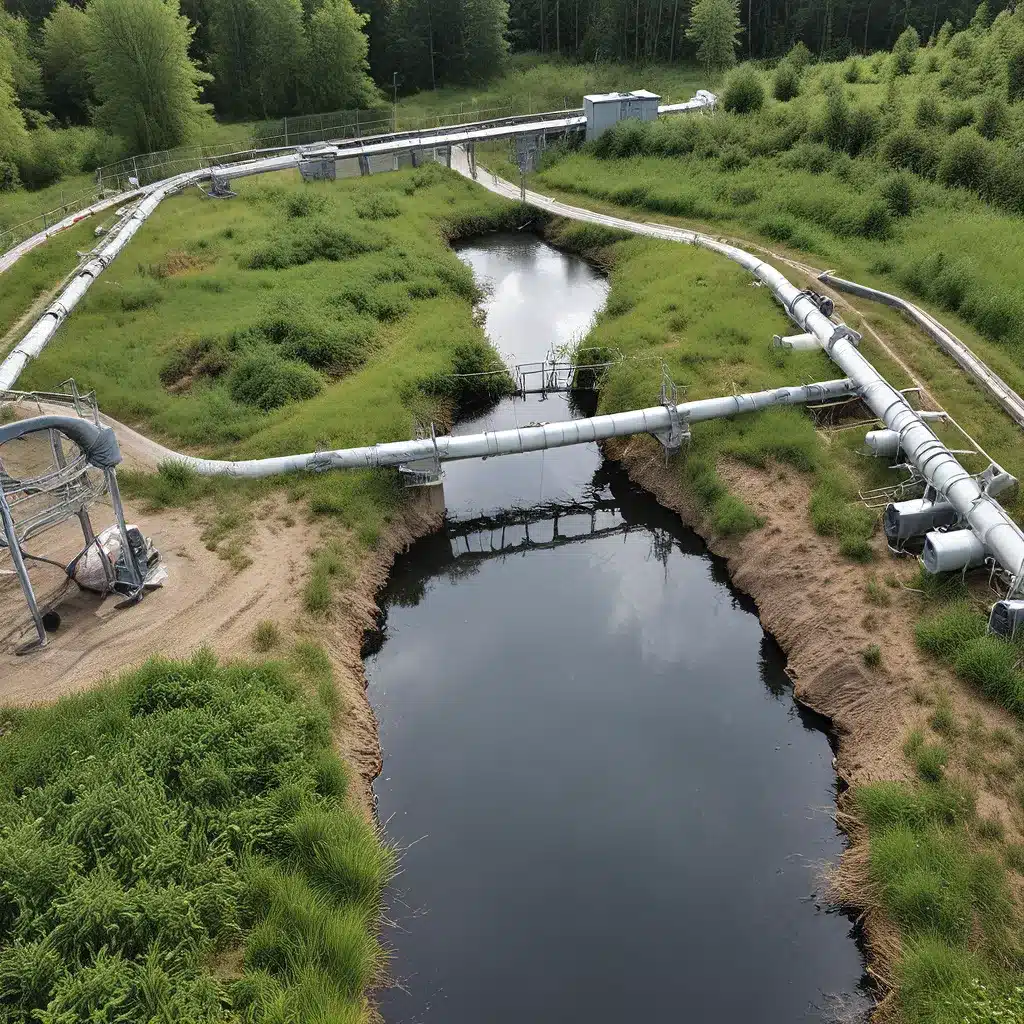
Restoring the Lost Harmony Between Humans and Nature
Have you ever wondered why our cities often feel so disconnected from the natural world? It’s as if we’ve built these concrete jungles, these impenetrable fortresses, that shut out the very elements that sustain us. But what if I told you there’s a way to change that – to unlock the untapped potential of nature-based solutions and transform the way we approach wastewater treatment?
As the experts at Arup recently pointed out, cities are so often designed and built as concrete mazes, where the idea of actively promoting nature and biodiversity seems almost antithetical. But with the growing recognition that nature-based solutions are more effective than their traditional, “grey” counterparts, it’s time to rethink our approach.
Spongy Cities and Integrated Water Cycles
Let’s start with a fascinating example from Arup’s work. Using their artificial intelligence and machine learning tool, Terrain, they were able to assess the “sponginess” – or natural ability to absorb rainwater – of seven global cities. And the results were eye-opening.
Auckland, for instance, had the highest sponge rating at 35%, with half of its study area made up of green and blue spaces. In contrast, London was the least spongy, with a staggering 69% of its urban center consisting of impervious surfaces. Imagine the difference in how those two cities handle stormwater runoff and the impact on their overall water management.
But Arup’s work didn’t stop there. In Greater Shanghai, a city grappling with a growing population, decreased green spaces, and a challenged drainage system, the team developed a visionary stormwater master plan. By using remote sensing tools like Terrain to scan the city and classify the entire area, they were able to devise a targeted water management approach that integrated blue, green, and grey infrastructure.
As the Biden Administration’s recent Roadmap for Nature-Based Solutions highlights, these integrated approaches can have a profound impact on urban resilience, water quality, and ecosystem health. It’s a far cry from the traditional, siloed solutions that have dominated the industry for too long.
Quantifying the Value of Nature-Based Solutions
But what about the cost-benefit analysis? Surely, these nature-based solutions must be prohibitively expensive, right? Wrong. In fact, Arup’s research has shown that nature-based solutions are, on average, 50% more cost-effective than their man-made alternatives. And the benefits extend far beyond just the bottom line.
In Mansfield, UK, Arup’s team conducted a rapid assessment of the potential for different land uses to accommodate nature-based solutions and mitigate surface water flood risk. Their analysis revealed that a mere £2 million investment to establish a green wastewater management solution would bring approximately £4 million in savings. But the benefits didn’t stop there – they also included improved resilience to floods, medical savings for the Department of Health due to reduced air pollution, increased local government and business revenues, and enhanced human health and happiness thanks to the added outdoor leisure spaces.
It’s a win-win-win scenario, and it’s precisely the kind of approach that the scientific community is exploring and advocating for. By integrating nature-based solutions into our urban planning and wastewater treatment strategies, we can unlock a whole world of benefits that go far beyond the traditional metrics of cost and efficiency.
Harnessing the Power of Digital Technology
But how do we actually make these nature-based solutions a reality? Well, as Arup’s experts have pointed out, advanced digital tools are the key to unlocking their full potential. Digital technology is a vital part of the pathway to a nature-positive world, helping us deploy these solutions with speed, accuracy, and impact.
Take Arup’s Terrain tool, for example. This AI-powered platform can digest massive amounts of data and satellite imagery, quickly identifying the different types of blue, green, and grey spaces within a city. And it’s not just about the numbers – Terrain can even distinguish between a tree nursery and a full-fledged forest, providing the kind of granular detail that’s essential for effective planning and implementation.
By harnessing the power of data analytics, machine learning, and automation, we can move beyond the traditional, manual approaches that have often hampered the adoption of nature-based solutions. And as the case studies from Greater Shanghai and Mansfield have shown, this digital-powered approach can lead to truly transformative results.
Embracing the Unknown and Celebrating Complexity
But as we delve deeper into the world of nature-based solutions, we must also embrace the unknown and celebrate the inherent complexities of this field. After all, the natural world is a tapestry of intricate interconnections, and understanding its role in wastewater treatment is no easy feat.
As the team at Inland Waters Inc. knows all too well, the journey towards sustainable, nature-based solutions is one that requires a delicate balance of scientific rigor, creative thinking, and a willingness to explore the unknown. It’s not about simply applying a one-size-fits-all formula, but rather, it’s about understanding the unique challenges and opportunities that each community and ecosystem presents.
So, as we move forward, let’s embrace the complexities, the uncertainties, and the ongoing research that will shape the future of wastewater treatment. Let’s be humble in the face of nature’s power and resilience, and let’s work together to unlock the incredible potential of these nature-based solutions. After all, the future of our cities, our communities, and our planet may just depend on it.


